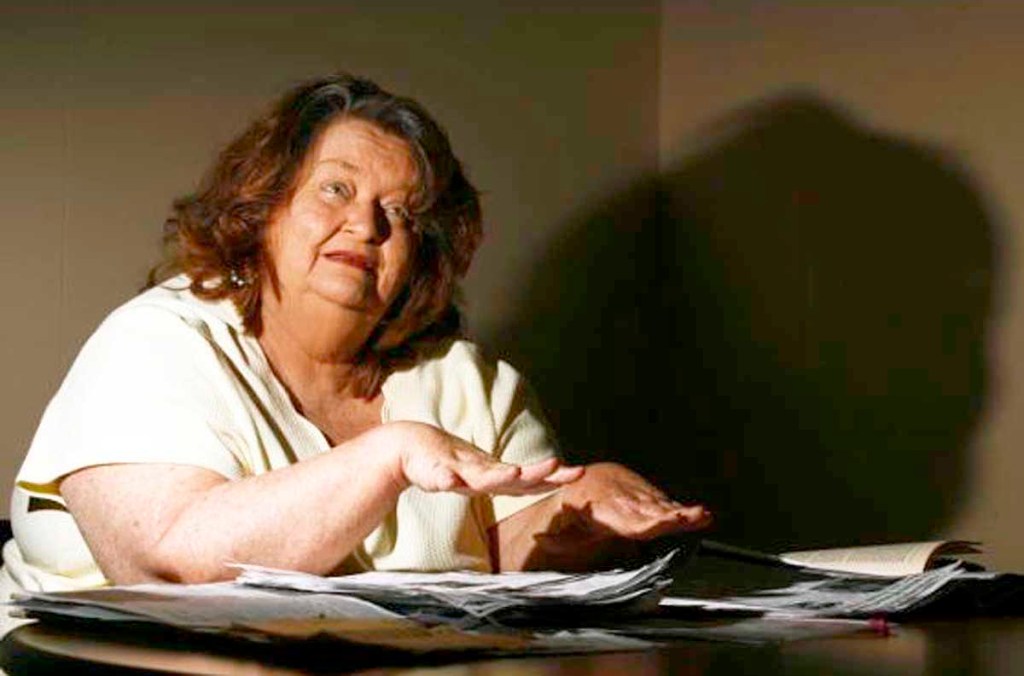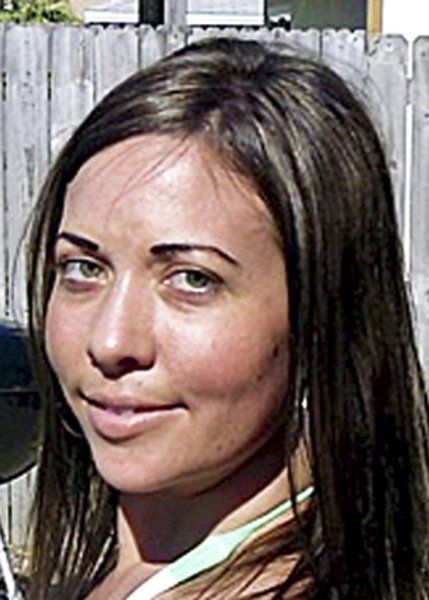Killer’s sister: ‘In Cold Blood’ inaccurate
Published 10:00 am Sunday, June 5, 2011

- Emile York Campbell of Panama City, Fla., has spent 50 years coming to grips with the 1961 murders committed by her brother, George Ronald York, and James Douglas Latham. Two of the women killed were from Valdosta.
From May 29 to June 10, 1961, George Ronald York and James Douglas Latham cut a swath of violence that affected people from Louisiana and Valdosta to Tennessee and St. Louis.
Their killing spree left several people dead in little more than a week. It led to their deaths as the last two men executed by hanging in Kansas.
Truman Capote writes of York and Latham in his book, “In Cold Blood.” They sat on Kansas’ death row with Richard Hickock and Perry Smith, the main characters of Capote’s famed book.
Fifty years later, Emile Gail York Campbell of Panama City, Fla., Ronnie York’s sister, seeks to correct misinformation regarding the case and wishes to share her and her family’s pain in the wake of her brother’s crimes.
At the time of York and Latham’s deadly travels, Campbell was only a 12-year-old girl. Though she and her parents, Horace and Malvie York, often visited Ronnie on death row, Campbell spent the following years hiding from her brother’s crimes. Years later, when she had a 12-year-old son, the boy learned of his uncle’s crimes through a friend at school, and Campbell still denied any connection with George Ronald York.
She spent years in counseling hoping to understand the feelings she carried because of her brother’s deeds. Even now, a half-century later, when she has come to terms with her brother’s past, when she can speak of him and what he did, when she’s preparing to write a book about his life and her own, Campbell still can’t describe the way she has felt about the crimes.
“I have always felt so bad about it,” Campbell says in a phone interview with The Times. She says through sobs on the phone, “It still hurts to think of all those children left behind without parents. … I remember my mom and dad praying for the victims. It always broke our hearts. … I don’t feel guilty for what happened. I don’t feel like it was my fault, or that I’m responsible. I don’t think it’s guilt. I think it’s compassion that I’m having.”
She was a child living in the shadow of a nightmare.
The Times recently received a letter from Campbell. She has been contacting newspapers and media organizations in towns and cities where people were affected by York and Latham’s crimes. Her correspondence shares a “Letter of Hope” written by York. She admits being uncertain of what she’s seeking. She seems surprised by the suggestion that one or more of the children left behind may wish to contact her once her story has been told.
“I think because this happened to me that I have compassion in my heart and soul,” Campbell says. “If this had not happened to me I wouldn’t have the compassion I have for people, but I wouldn’t want anyone to go through what I have been through.”
KILLING SPREE
George Ronald York and James Douglas Latham’s crimes have been detailed by books, newspapers, police reports, court documents, and now websites. Those details have been blurred and misrepresented, Emile Campbell says, by a book that is considered the bible of true-crime journalism.
In the late 1950s and early 1960s, both men were Army privates stationed at Fort Hood, Texas. Both white males, they reportedly did not care for being integrated with black soldiers. In May 1961, York and Latham went AWOL (absent without leave). They reportedly attacked a man in Louisiana and stole his vehicle then traveled to Jacksonville, Fla., where York’s family lived.
In Jacksonville, they met Althea Ottavio and Patricia Hewitt, two women from Valdosta, on May 29, 1961. Both women were killed.
For a week, York and Latham seemed quiet after the Valdosta women’s deaths. Then came one case after another, according to various accounts.
On June 7, John Whittaker was killed in Tullahoma, Tenn.
On June 8, Albert Reed died violently in Edwardsville, Ill.
Outside of Edwardsville, Martin Drenovac, dead.
Two men died in St. Louis, Mo.
On June 9, Otto Ziegler in Wallace, Kansas, was murdered.
On June 10, Rachel Moyer in Craig, Colo., was killed.
Some of these cases happened near service stations or the encounters began at service stations. Their connections to some of these deaths have been called into question. They stole vehicles as they went, trading one for another. However, Internet reports claiming they stole the Valdosta women’s car do not match reports from 1961 that the car was discovered stuck in a ditch, abandoned.
Car thefts led to their capture.
On June 10, 1961, Utah authorities arrested the men for violating the National Motor Vehicle Theft Act, a federal law making it a crime to cross state lines with a stolen vehicle.
“On June 11, York and Latham bragged to investigators that they had killed eight or nine people since they left Fort Hood,” a statement in a Wikipedia article that contradicts earlier lists of those killed, by noting, “Police later learned that nine people were attacked by York and Latham, but two had survived.”
Given their known crimes, the men could have been sent to any number of states for trial. They were sent to Kansas. On Dec. 19, 1962, a jury convicted York and Latham. The judge sentenced them to death by hanging.
On June 22, 1965, York and Latham were hanged in Kansas’ Lansing Correctional Facility. The last men hanged in Kansas — first Latham, then York.
Emile Campbell knows this last fact all too well. She was 16 at the time of her brother’s execution. Years later, before coming to grips with the anger she felt for her brother and the shame caused by his actions, she argued against a move to place the Kansas gallows scaffolding in a museum. The gallows would include a plaque noting her brother was the last man hanged in Kansas. She was outraged by this new reminder of what her brother had done and the pain he had caused their family.
“I told them, ‘You hung my brother but his family has had to serve his sentence’.”
It mirrored the same type of outrage she has felt toward all of the misinformation regarding her brother, especially with Truman Capote.
IN COLD BLOOD
Capote’s “In Cold Blood” is considered by many critics to be a classic. Some critics consider the book to be the originator of the “non-fiction novel” and the true-crime genre. Capote explores the lives of Richard “Dick” Hickock and Perry Smith and their violent encounter with the peaceful Kansas farm family of the Clutters in the late 1950s.
On death row, Hickock and Perry met Ronnie York and Jimmy Latham. “In Cold Blood” depicts York and Latham as having no remorse in killing several people across the United States.
That’s just one problem that Emile Campbell has with the book. Originally, she had a problem that the book existed at all. Adding to her frustration, “In Cold Blood” became a bestseller adapted into a movie of the same name and then, more recently, the book became the crux for the biographical movie “Capote.”
She avoided the book for years. Given she plans to write a book about her brother’s case, Campbell realized several months ago she could no longer avoid it. She read Capote’s book.
She claims “In Cold Blood” is riddled with inaccuracies. She says some of the stories which Capote attributes to Hickock and Smith were actually events that happened in the lives of her brother and Latham.
Campbell claims Capote first approached Malvie York for the rights to write the story about Ronnie York and Jimmy Latham, but she turned him down because Mrs. York knew the additional publicity would further hurt the young Emile. Campbell says her mother referred to Capote as a “little weasel.”
Campbell does not deny her brother’s involvement in the crimes, though she says Latham was the killer. She says her brother claimed that Latham killed the two women from Valdosta. But she says Capote’s book is wrong about many things.
In the months leading to their executions, Malvie York became friends with Richard Hickock’s mother. With sons on death row for horrendous murders, they developed a rapport. Mrs. York and Mrs. Hickock traveled to see each other. They visited each other’s homes. They understood each other in a way no one else could understand them. They were the mothers of men who would die for killing others.
LETTER OF HOPE
Meanwhile, Campbell says that Ronnie York and Dick Hickock turned to religion on death row. She says they read the Bible together.
Awaiting execution, York wrote a “Letter of Hope” to those affected by his crimes. Campbell included a copy of this type-written letter/poem with her original letter to The Valdosta Daily Times. She estimates he wrote the “Letter of Hope” about two months after his arrest.
“Upon advice of legal counsel, (York) was discouraged to the point he reconsidered public distribution” of the letter, Campbell writes. “I personally think that was a grave mistake on everyone’s behalf. The letter has brought healing and forgiveness to me, and prayerfully, it will do the same for Mrs. Ottavio and Mrs. Hewitt’s family, friends and community.”
Here, according to his sister, is Ronnie York in his own words:
“To those that have been hurt in some way through my hands, I am writing this with a heavy burden upon my heart, to undo or right in some way this wrong that I have done.
“I know that I can’t completely undo this thing I’ve done.
“I know I can’t bring a father or mother back to their loved ones, because it is out of my hands.
“It is now in the hands of Someone much greater than anyone or anything on this earth.
“If I could make a trade with Him, I would gladly give my life to have theirs back.
“Only He doesn’t work things that way.
“I am going to do the will and the work of the Lord, no matter what happens to me.
“If man should take my life here below, I will live for my Father in Heaven until I meet Him there.
“If my life should be spared, I will live every breath for Him, trying to help others to know Him, and trying to right the wrongs I have done.
“I am doing it this way, with the help of God, because I believe it is His will, and what He would have me to do.
“This is why I am writing this letter now — is to try and tell you of the Loving and Merciful forgiveness of our Lord.
“He has forgiven me, and put peace and Love in my heart, instead of worldly hate and evil.
“I could never, and I don’t believe there is a man on earth, that can explain, the peace and Love I feel in my heart and soul; on paper or even in words.
“You have to know Him, as I have found Him, or you will never really know how I really feel.
“I pray every day that somewhere in someway, that you will find a place in your heart to forgive me, for any wrong against God and mankind.
“I know if you are a child of God that I have already been forgiven; and if not I hope and pray you will find Him like I know Him, not only where I can be forgiven by you, but where you will escape the hell that burns forever, where I was surely headed before I found my place with my Lord and Savior.
“A friend and I hope and pray, a brother in Jesus —”
THE VALDOSTA WOMEN
On June 6, 1961, the first story appeared on the front page of The Valdosta Daily Times under the headline: “Car Found, Mystery Grows: 2 Women Still Missing.”
Valdostans Althea Ottavio, 45, of North Ashley Street and Patricia Ann Hewitt, 26, of Monroe Street had been missing since May 29.
Ottavio had a mother and sister.
Hewitt was married to a Carr Consolidated Biscuit Company employee. Hewitt and her husband had four small children, three daughters and a son. The Hewitts had lived in Valdosta for about three years in 1961. Her parents lived in Detroit.
The women had traveled in Ottavio’s 1959 Chevy to “play a hunch” at Orange Park Kennel Club, a dog-racing track in Jacksonville. The women played the 2-5 combination in the Daily Double. The hunch paid off. They won $177 on a $2 bet.
That evening, they apparently became lost. At approximately 1:30 a.m., May 30, the women stopped at a Jacksonville service station where they called Robert Hewitt, Patricia’s brother-in-law, to ask for directions. He told them to wait and he would come get them. The two women were gone by the time Robert Hewitt arrived at the service station.
The gas-station attendant told Robert, and soon Duval County, Fla., authorities, that a man in a pick-up truck entered the station while the women were there. The man claimed to be from Arkansas and bought a pack of cigarettes. The man told the attendant he was going to talk to the women. The man said something to the women that made Ottavio laugh. The attendant noticed a second man in the pick-up truck but he did not get out of the vehicle.
Soon, the men left driving north while the women left in the opposite direction.
Patricia’s husband and Ottavio’s brother-in-law traveled from Valdosta to Jacksonville to search for the missing women.
The 1959 Chevy had been discovered abandoned, stuck in a ditch, about 15 miles south of Jacksonville in what was then described as a “desolate area.” A few days later, searchers from a helicopter found the women’s decomposing bodies near this same location.
The June 7 Times headline ran six columns, two decks deep, across the front page. “2 Valdosta Women Found Dead / Near Jax; Assault Is Indicated.” The bodies had been discovered that same day in an era when The Times published as an afternoon paper. The article indicated the women had likely been strangled.
On June 8, The Times confirmed strangulation as the cause of death. The killer used the women’s stockings to strangle them. Authorities found a stocking still wrapped around the neck of one woman.
As authorities launched a search for the “Arkansas man,” Utah authorities were taking Ronnie York and Jimmy Latham into custody for driving a stolen vehicle across state lines.
BEFORE THE PAIN
Emile Campbell recalls her brother telling a murky story about the two women from Valdosta. Jimmy Latham led one into the woods where he killed her. Latham then told the other one that the first woman had become sick and needed help, according to the story York told his sister. Then Latham killed her. York told his young sister he didn’t kill either woman.
York also told her that they thought they had left a Louisiana man for dead when they stole his vehicle. Believing they had killed one person, they saw no reason why they shouldn’t kill others. Campbell says York told her that had they known the Louisiana man had not died, the other murders may not have occurred.
Months earlier, Campbell says her brother went AWOL from the Army. She recalls military police arriving at her parents’ home. Ronnie hid under the house. She recalls MPs dragging York out from under the house.
In 1961, when he arrived AWOL a second time with Latham, they did not stay at the York home. Instead, they hid along the St. John’s River near Jacksonville. She recalls accompanying her mother to the river, taking York and Latham something to eat. She remembers Jimmy Latham having a bullwhip.
She has a vague memory of an early morning when she heard a knock on the door. Early enough that it was still dark outside in an era when people felt safe not locking their doors, at a time when a girl felt safe answering the door without asking who might be knocking.
She opened the door. Ronnie stood in the threshold. He asked, “Where’s mama?” He went inside the house. Returning, “Ronnie hugged my neck and said goodbye.”
The family thought he was leaving Jacksonville because he felt the MPs were on his trail. They didn’t know of the two missing women from Valdosta. They didn’t know of the other people who would cross York and Latham’s path out there on America’s roads in the days to come. Twelve-year-old Emile didn’t know of the pain that would soon haunt her and others for decades to come.
She recalls looking through a window as her brother left the York house. She saw him get into a phone booth and make a call. She recalls Jimmy Latham driving up and Ronnie York jumping into the vehicle then driving away. She didn’t know then it would be the last time she saw her brother as a free man.





